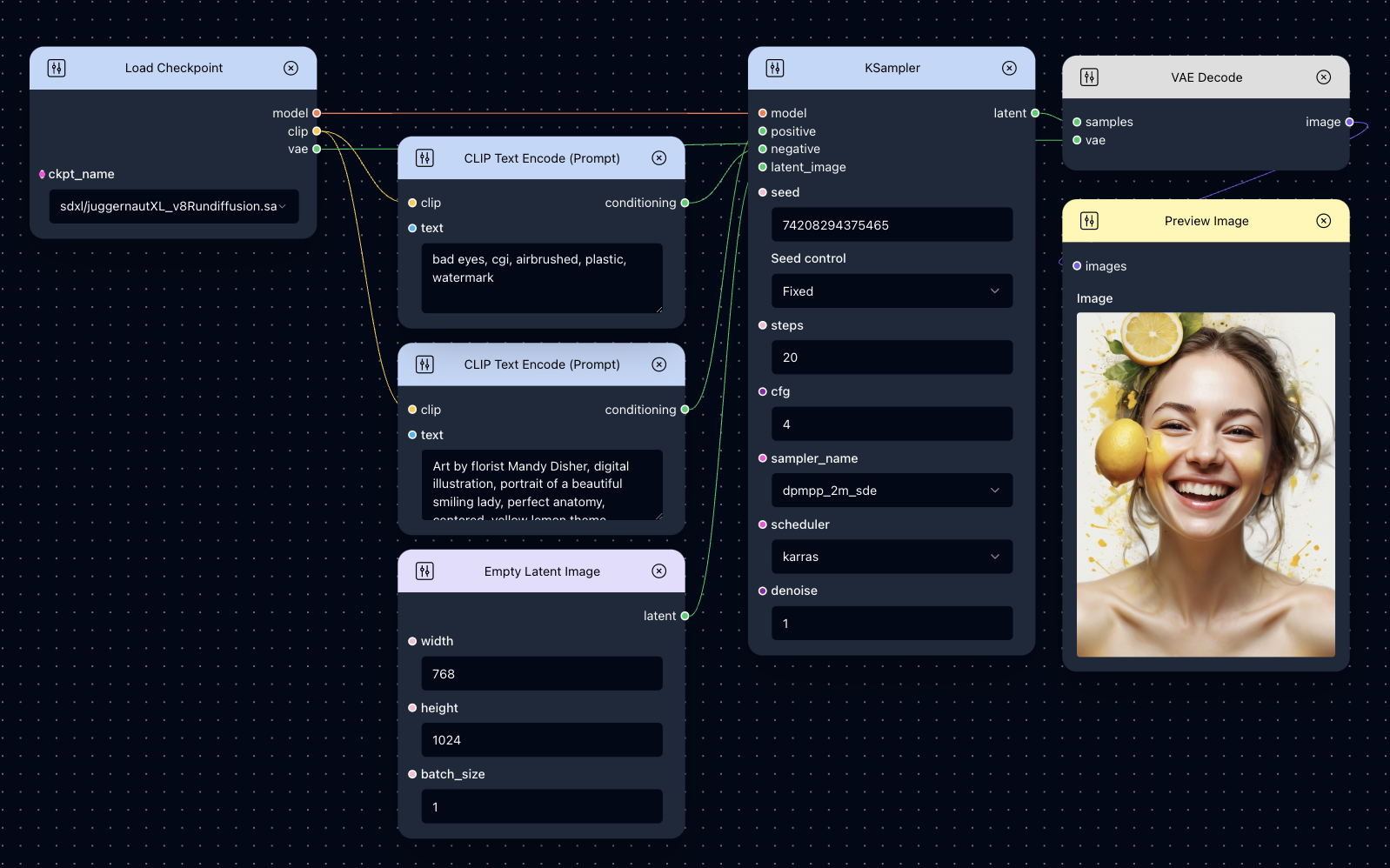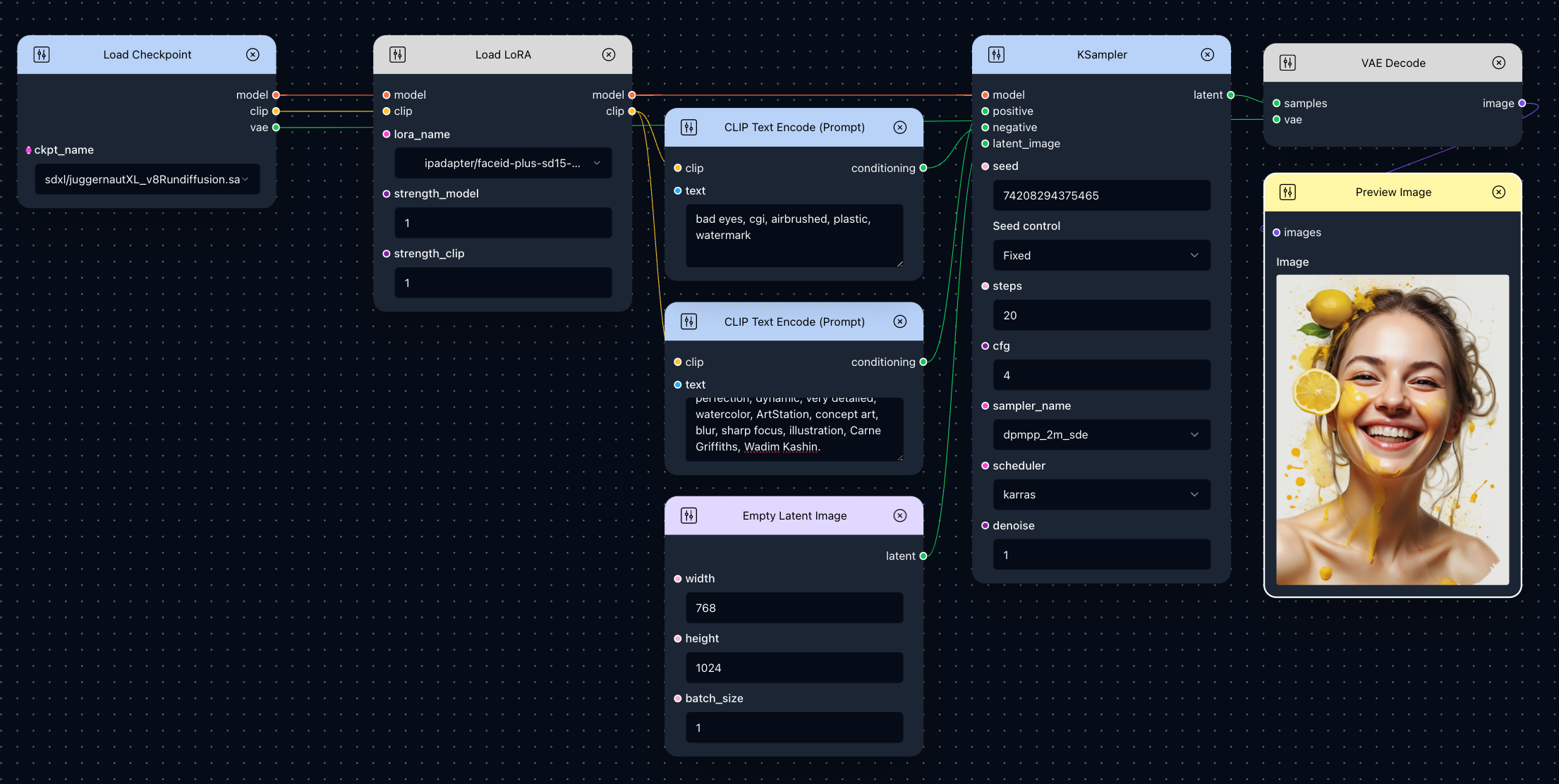Load Checkpoint node is a fundamental component to load a diffusion model, which are used to denoise latents. This node will also provide the appropriate VAE and CLIP model.
Introduction
This node operates as a selector. It selects the appropriate model based on the ckpt_name chosen by user. It also provide the CLIP model used for encoding text prompts and the VAE model used for encoding and decoding images to and from latent space.
Think of Load Checkpoint as the power source of a circuit, generating three distinct currents: model, VAE, and clip. By connecting wires to corresponding nodes, you can activate their functions.
Note that some models may not include VAE, which may result in node not having VAE output.
Inputs
| Name | Explanation |
|---|---|
ckpt_name |
The checkpoint use for diffusion model. |
Outputs
| Name | Explanation |
|---|---|
model |
The model used for workflow. |
vae |
The VAE model used for encoding and decoding images to and from latent space. |
clip |
The CLIP model used for encoding text prompts. |
How to Use
Direct Output Model
For most workflows,such as Text to Image, using the model provided by Load Checkpoint is effective enough. Typically, it is used with the following nodes:
- CLIP Text Encode (Prompt): This node can encode a text prompt using the
CLIPmodel into an embedding conditioning for the sampling process that KSampler perform. - KSampler: This node uses the
modelprovided and the conditioning to generate a new version of the given latent. - VAE Decode: Using the
VAE, this node decodes the latent image data output by KSampler into ordinary image data before we can view it.
 The example workflow shown above is a simple Text to Image workflow.
The example workflow shown above is a simple Text to Image workflow.
In this workflow, Load Checkpoint is the sole source of model, VAE, and CLIP outputs, with any node requiring them connected accordingly. This enables the nodes to function as intended.
Output Model from Lora
Sometimes, the model from Load Checkpoint may be not good enough. In such cases, constructing smaller, more agile models based on the diffusion model is necessary, with Load LoRA being a popular choice.
- Load LoRA: This node can modify
modelandCLIPto change the way Latent data is denoised.

In this workflow, Load Checkpoint’s model and CLIP outputs connect to Lora’s inputs, and nodes requiring model and CLIP inputs use Lora’s output instead of Load Checkpoint’s. Note that VAE retains its original output. This modifies the diffusion model, producing more stylistic works.